Alejandro Jodorowsky and Mœbius’ masterpiece The Incal turns a lusty 40 years old…

The Incal is one of those classic comics inevitably spoken of with deep reverence, almost in hushed tones. Beyond its sci-fi construction, there’s something if not quite religious, then certainly spiritual about the experience of reading this epic borne of two creative visionaries — Alejandro Jodorowsky and Mœbius.
Humanoids’ has a new 40th anniversary edition out Tuesday — and so there could not possibly be a better time than now to have some of comics’ top artistes and auteurs weigh in on a timeless work that elevates its genre to the realm of literary, fine-art achievement.
Here, then, are 13 of comics’ top creators — such as Mike Allred, Darick Robertson, Jason Aaron and many others — on the lasting impact of The Incal:
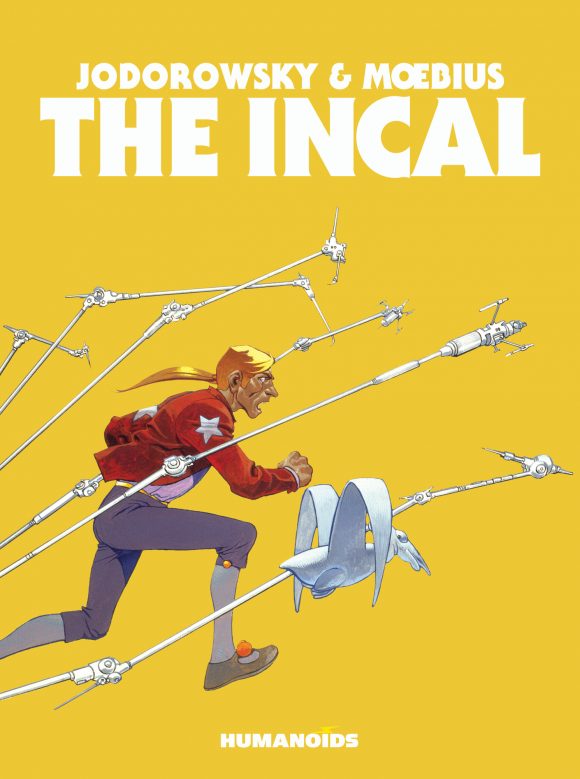
—
Michael Allred (X-Ray Robot, Madman). Mœbius is easily “Top Ten” for me! In the mid ‘80s Marvel started releasing a “Mœbius Library” and his work lit me up with an indescribable energy. In fact, it was his work among a handful of others at the time (like the Hernandez Brothers’ Love and Rockets) that motivated me to seriously start creating my own work. The range of styles and content was more diverse and unique than anything I’d ever seen! I loved what I was seeing so much and was so impatient to wait for each Marvel/Epic volume, that I obsessively looked for everything I could find at every comics shop and comic book convention I could get to. So many treasures! Priceless given all the infinite inspiration that has flowed since.
—
James Stokoe (Alien: Dead Orbit, Orc Stain). In my late teens, there was a very special day when I was introduced to the work of Mœbius, paging through The Long Tomorrow, followed quickly by The Incal. When John DiFool is tossed off of Suicide Alley, in what may be one of the most iconic comic pages of all time, it was like finding a blueprint for all the stories and aesthetics that had informed my taste up to that point. It’s so rare to find an artist who is so technically brilliant, but where even that fine level of draftmanship is just a fraction of the appeal of his work. The ease of his humor and sense of adventure, of the way he could bounce between different ideas in such a perfect rhythm, it is something that still inspires me the same way today as it did all those years ago. Truly timeless work.
—
Zoe Thorogood (The Impending Blindness of Billie Scott). As someone whose work relies primarily on linework and fine detail, Mœbius has always been a huge inspiration to me. I remember first seeing his work as a kid and being blown away by his attention to detail and fluid designs. He’s one of the few artists whose illustrations can truly carry you to other worlds of intrigue and wonder.
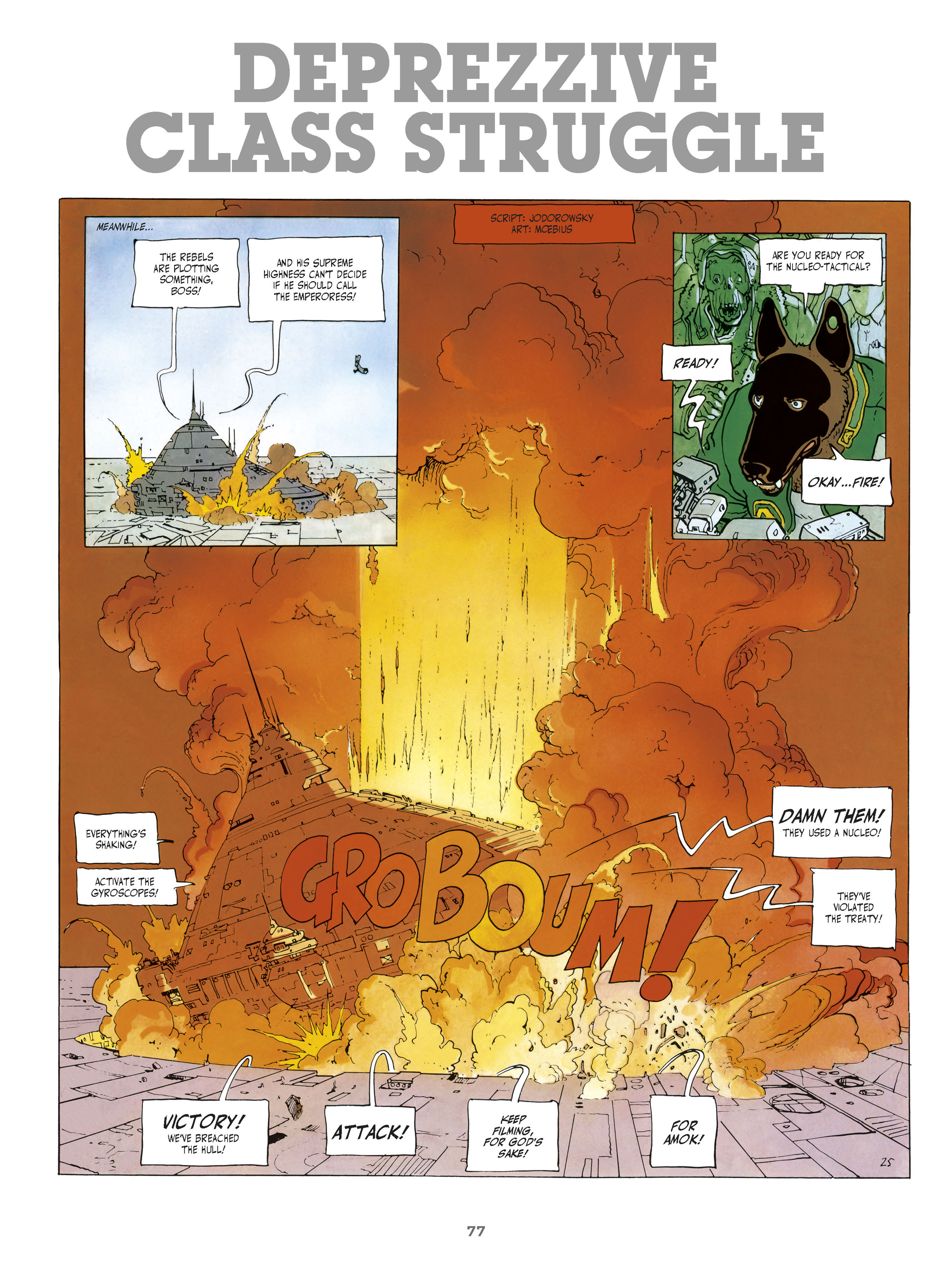
—
Darick Robertson (Oliver, The Boys). I first discovered Jean “Mœbius” Giraud’s work when The Incal was serialized in Heavy Metal magazine back in the early ‘80s. I was immediately drawn into his design and world building, as well as his impeccable storytelling.
When the animated Heavy Metal film came out, I hadn’t realized that my favorite bits were inspired by him, the same artist. I loved Taarna soaring through the husk of an impossibly large beast on the back of that featherless bird…
I bought Mœbius’ Marvel posters and loved his take on their characters. The high point being the Silver Surfer series he did with Stan Lee and his amazing take on Galactus.
I met Mœbius briefly at San Diego Comic Con in the mid ‘90s. Alas, my lack of French made the conversation short and awkward, but he was kind and seemed to understand my enthusiasm for his work and meeting him.
Years later I walked into the offices of DC Comics, and was told by my editor that the next three issues of Transmetropolitan would feature covers by Mœbius. I was so excited. I was asking when he’d be turning them in, when I was informed he had already submitted the three covers. As I looked at his original art, I was spellbound. There was one of my all time favorite artists and he had drawn the character that I’d designed and co-created. It was a truly high point in my career, from going from a young teen, reading Heavy Metal, to seeing Mœbius drawing Spider Jerusalem.
As I’ve matured as an artist and a designer I find myself studying his work more intently than ever, since his ideas were always so fantastically original, and his sense of composition was such that a single image tells a story.
Truly, a master of the craft and a shining star to sail by.
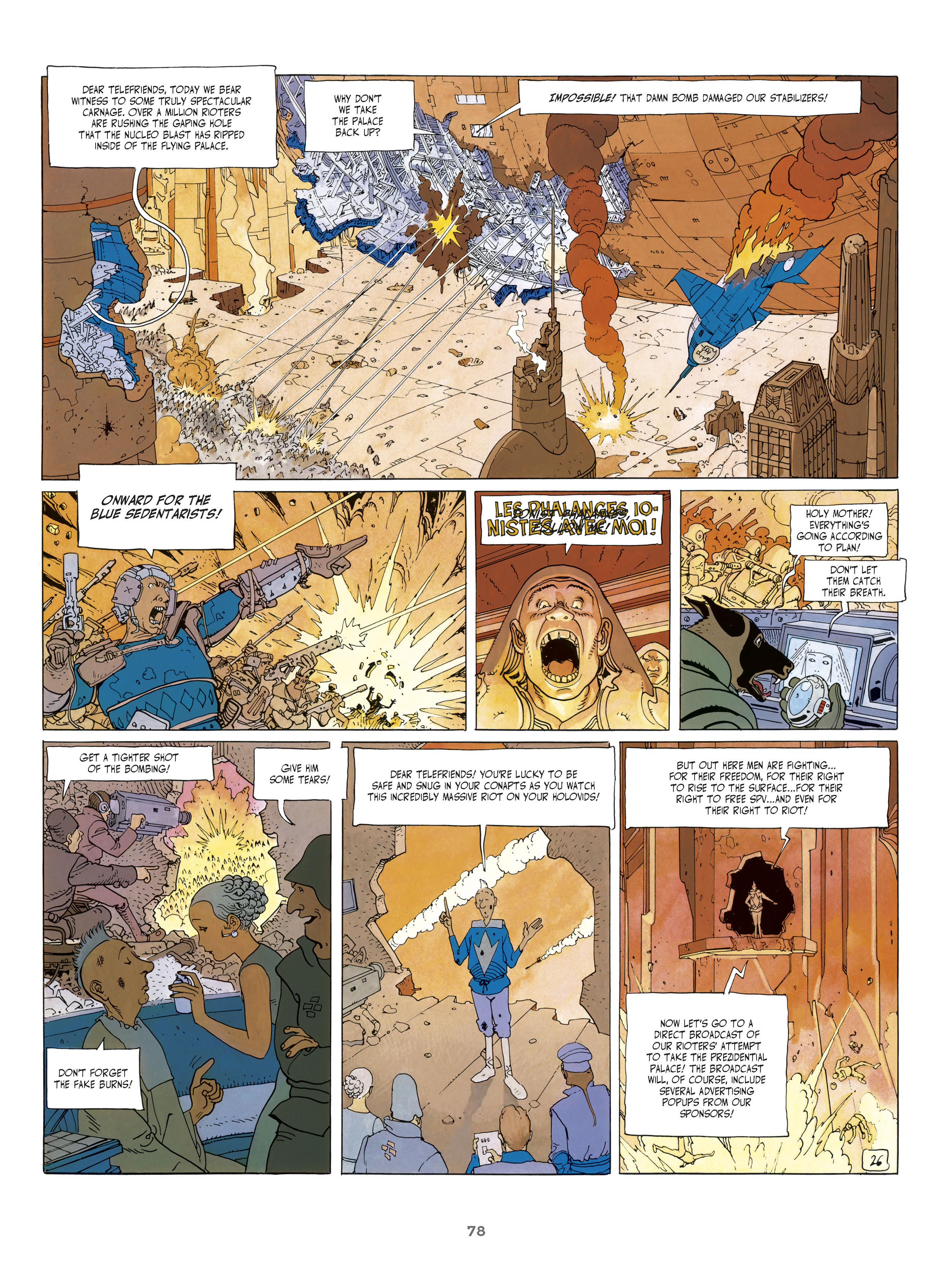
—
Dan Watters (Lucifer, Coffin Bound). Everything comes back to The Incal. I can’t quite imagine how sci-fi would look today without it. I can’t quite imagine how comics would look today without it. Jodorowsky and Mœbius steep the work in a spirit of dissent, conjuring a world fraught with political and ethical upheaval at every level. The first time I picked up the book as a reader it felt dangerous, like a revolution thrumming in my hands. As a creator, it lit a fuse.
—
Stephanie Phillips (The Butcher of Paris, A Man Among Ye). With The Incal, there are no boundaries. Nothing is off limits, no idea is too out there. As with anything Mœbius created, it serves as a reminder to give free reign to wherever my own imagination wants to go, and to not be afraid of pushing the limits of what this medium is capable of. Mœbius and Jodorowsky built a timeless classic from pure imagination, and set a bar the rest of us can reach for.
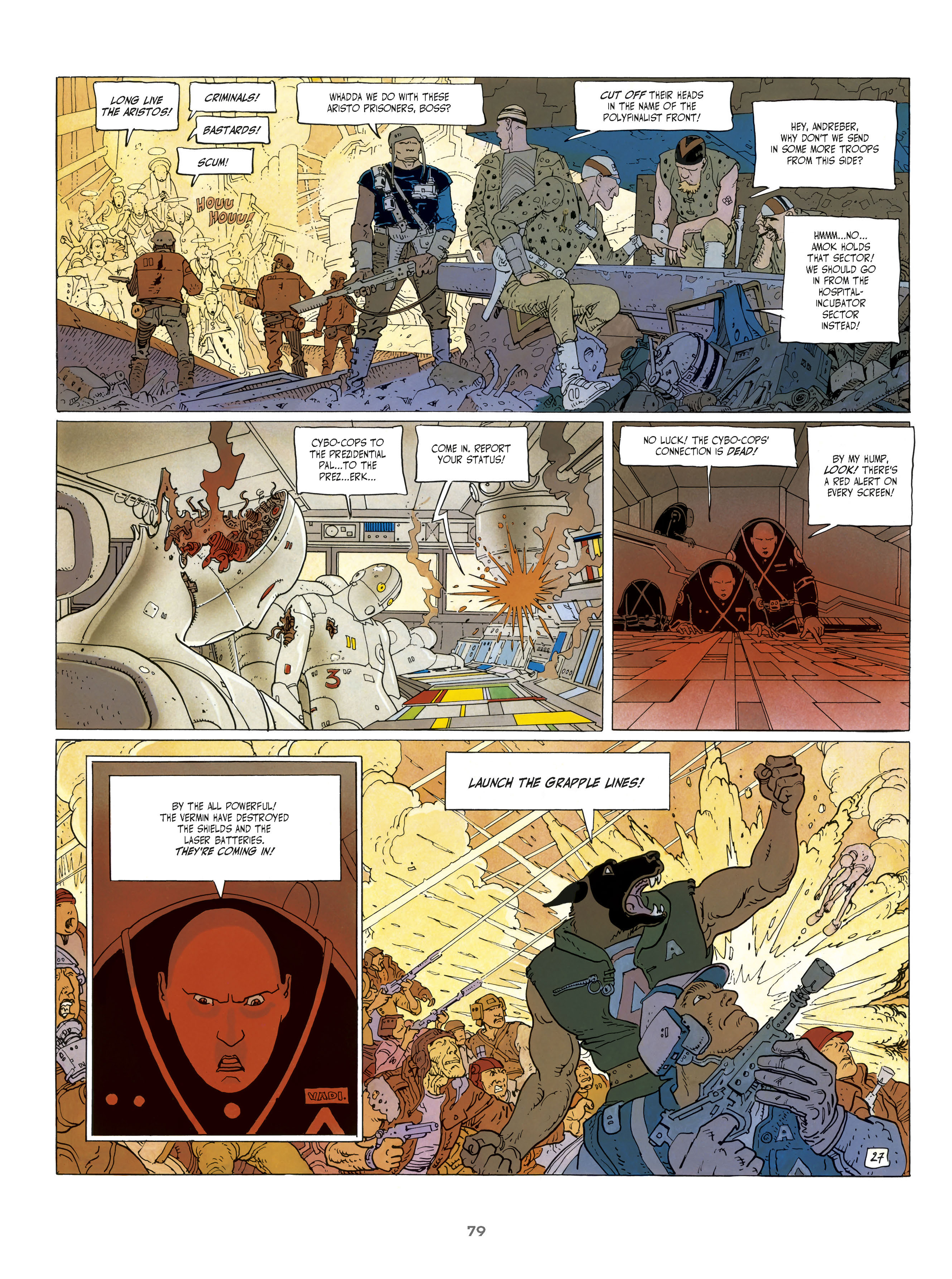
—
Chris Burnham (Die!Die!Die!, Nameless). Mœbius changed my life and saved my career!
I’ve been a fan of Mœbius since I picked up Silver Surfer: Parable in the late ‘90s, and over the next few years I tracked down most of the American translations of his work. Is it bragging to say that I bought all of the Mœbius Epic collections at cover price or less? In the early ‘00s I bought some of those Blueberry volumes at a convention for $3 a pop! Head on over to eBay and weep, you fools!
I’ve based my whole career being an American Mœbius acolyte. After a few years of fumbling around trying out different styles when I was breaking in, the one that really clicked was on Elephantmen, when I tried to combine Mœbius’ naturalistic detail with Milton Caniff’s chiaroscuro shadows. And the more and more I leaned into the Mœbius, the better my career went. From Nixon’s Pals to Officer Downe to Amory Wars to Batman to Nameless to Die!Die!Die!, Mœbius has been a shining light for me.
At the time I broke in in the early ‘00s, it was basically only Geof Darrow, Frank Quitely and Ladronn who were making American comics in the Mœbius style. Now there’s a whole school of those guys. Aaron Kuder, Ramon Villalobos, Nick Pitarra, Nick Dragotta, Ian Bertram, Ryan Bodenheim, Xurxo Penalta, Nate Simpson, André Lima Araújo, and I’m sure a bunch more I’m forgetting. That is one bright shining light.
—
Sam Sattin (Bezkamp, Wolfwalkers). The Incal is everything we know and love about modern science fiction. Like Osamu Tezuka, who brought manga to the world, Mœbius’s art became the stuff of new frontiers. Perhaps the most iconic of all his works, The Incal survives as a testament to world-building, weirdness, and the visual externalization of spiritual concepts. This is a book not just for readers, but for artists who want to learn how alien universes are built.
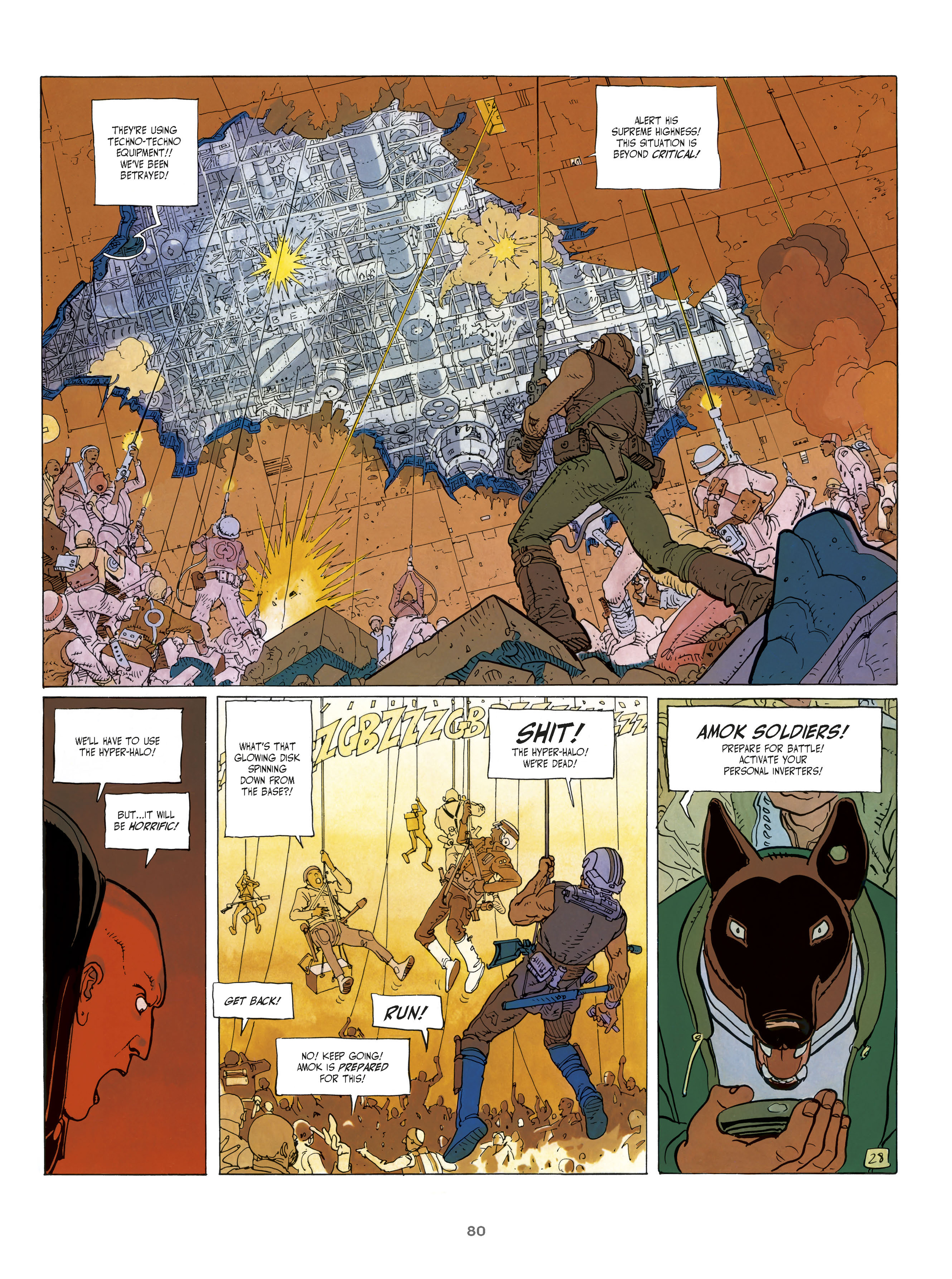
—
Sean Lewis (Thumbs, Coyotes, Bliss). I came to The Incal through Jodorowsky. I had an uncle who would babysit me and sometimes El Topo would be on when I was way too young to watch it. It was so strange and so true, though. I could sense it. I think that’s what a great auteur does. And I think there are few GREAT auteurs. They make you feel that something is surreal and ahead of you, but somehow true. It’s disarming. I grew to love comic books and cult movies and I remember being 15 or 16 and learning about the French comic books. I got my hand on Incal. I didn’t know who Mœbius was at that point—I’d seen his Alien work, but this was something different. The books had everything I wanted before I knew I wanted them. They were beautiful and strange, they started in the midst of action but spent many pages ruminating, questioning. Philosophy as action movie. I was hooked. The work I do has clearly been influenced by them. If nothing else by the way they treated comics as a higher literature form. They weren’t scared of their reader. They were gonna take you somewhere, norms be damned! I think it let me approach each comic book I do as “What can this be?” What are the limits? What is the best form? Is a comic 20 pages an issue or is it something else? Is it something way beyond that in our imaginations?
—
Johnnie Christmas (Tartarus, Angel Catbird). The Incal blazed a trail for sci-fi comics like Tartarus (my series with artist Jack T. Cole). It broke the rules and gave the genre permission to have love, religiosity, and poetry seamlessly alongside technological wonders, futuristic vistas, and mind-bending action.
—
Jack T. Cole (Tartarus). I think The Incal should always be spoken of in the same breath with El Topo and The Holy Mountain as one of Jodorowsky’s monumental works. Few writers who have worked in film treat comics with the same degree of respect and ingenuity for the medium as they do for their native medium, but Jodorowsky certainly has. I would not say the blending of esoterica and narrative is effortless in The Incal, but its mysticism is both humorous and authentic, and it remains unparalleled in its bridging of surreal and occult thought with compelling narrative. And all this without mentioning Mœbius! Mœbius’ rendering is both realistic and abstract in just the right amounts to make the story feel grounded in reality, but also allow the stranger ideas to flow across seamlessly. And that, combined with Mœbius’ own set of symbols that he brings and his understanding of the material is the vehicle that brings The Incal to the level of a masterpiece.
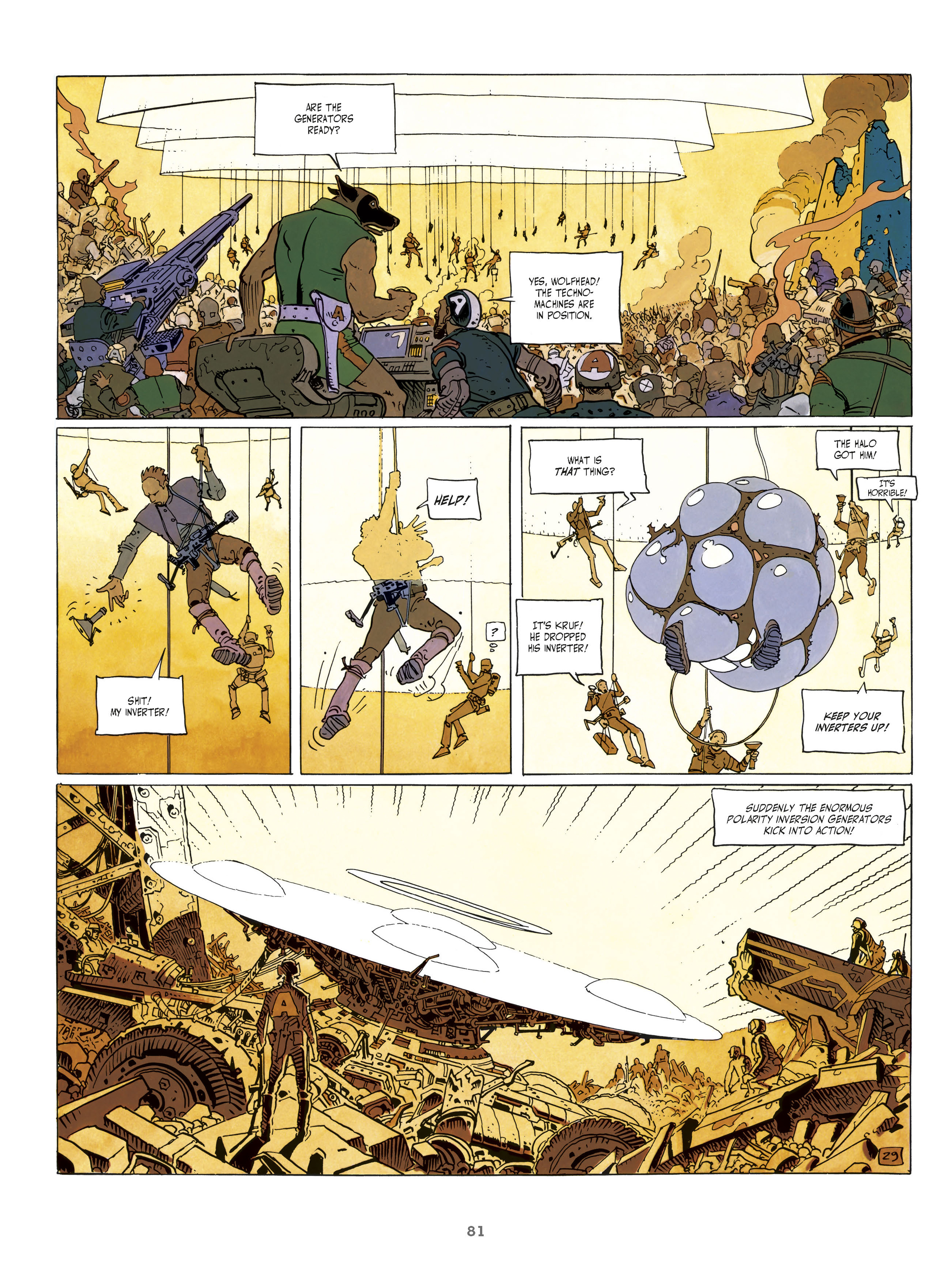
—
Jon Davis-Hunt (Clean Room, The Wild Storm). I grew up in the countryside of east England in the early ‘90s, which made being a young comic book fan especially difficult. This was pre-internet (and certainly pre-geek culture) and so getting hold of comics books, or even finding out where you could get hold of comics books from, was a considerably tricky business. The nearest town had no “local comic store” and you couldn’t simply log onto Amazon and order a fat parcel of trades to arrive the next day. Instead, on any weekend excursions with my parents, when we would visit some museum or market, I used to scour the local second-hand book shops, or jumble sales, for that glorious, though seldom found, piece of treasure — a carrier bag filled with second-hand comic books.
It was on one such expedition (I think, possibly to Cambridge?) that I came across a bag full of old, partly worn, back issues of Heavy Metal. And so, at the tender age of 12, I became suddenly and immediately aware of the glorious world of French comic books and in particular, the incredible art of Mœbius.
I cannot remember the exact story that was reprinted — I think it might have been the third volume of The Incal? — but I do remember how strongly the artwork impacted me. There was something about the solidity and form that everything had. Objects looked like they had genuine weight and mass, coupled with an expansive amount of detail, yet also a lightness and fluidity to the line weight. I loved the way it both looked like a comic, but also reminded me of great illustration. Mœbius was also a master of pulling out the camera, to show the vastness of a landscape or scene, even in a relatively small panel. And there were often 9, 10, or even 12 panels on a page — the madness! Yet even when that was the case, nothing felt squashed or reduced in detail.
Every panel could be poured over and enjoyed in and of itself and the sheer incredible amount of imagination on display was staggering.
Mœbius opened my eyes to the wider world of French and Belgian comics, and his art specifically, has had a huge influence on my own style as an artist and designer.
—
Jason Aaron (Southern Bastards). Jodorowsky is our prophet. Our patron saint of imagination. A man with the mind of a god, where universes upon universes swirl and splinter, explode and coalesce, and wither and flower, all at once, all the time.

—
The Incal 40th Anniversary Edition, a 316-page paperback, is available now from Humanoids. It lists for $29.99.
—
MORE
— Jodorowsky and Moebius’ Classic ‘METABUNKER’ Short Story Available for Download. Click here.
— GEOF DARROW Recalls the ‘Poetic’ MOEBIUS. Click here.

September 8, 2020
Happy anniversary to “The Incal”!